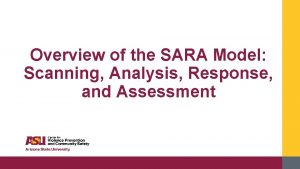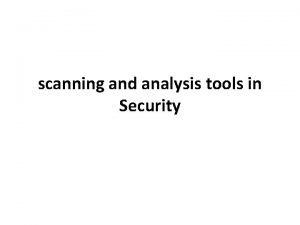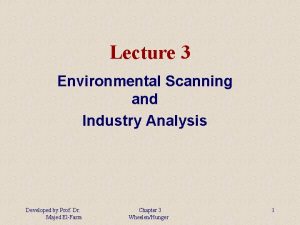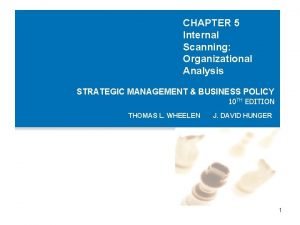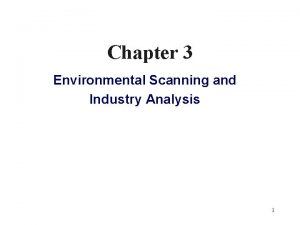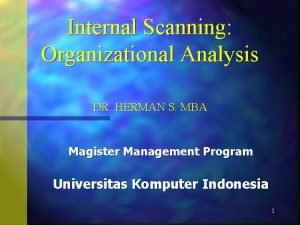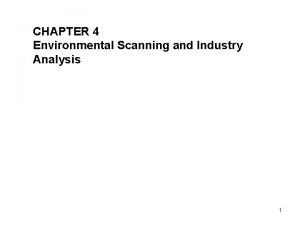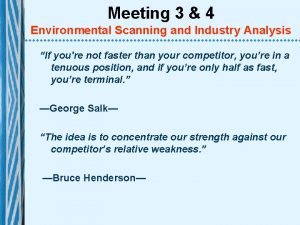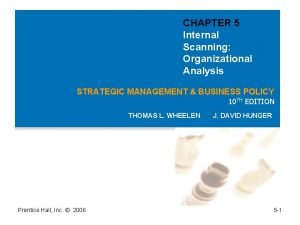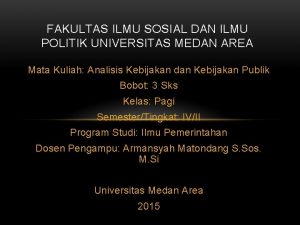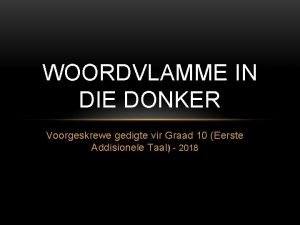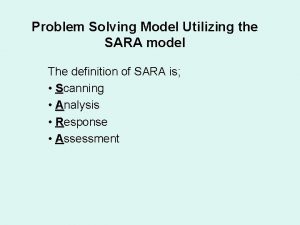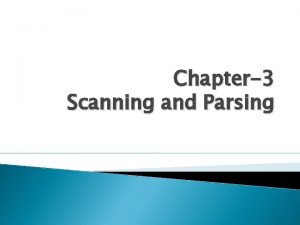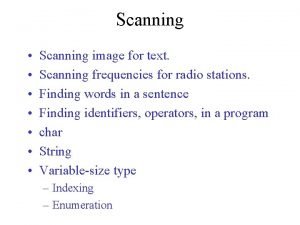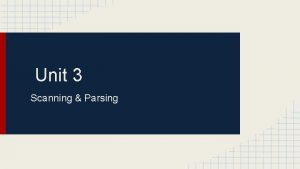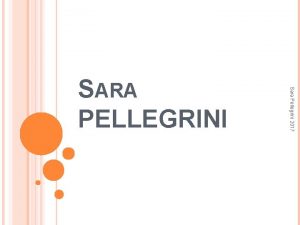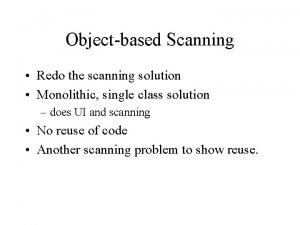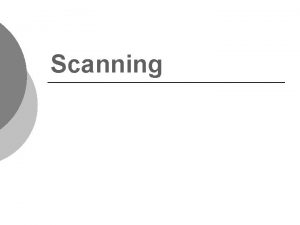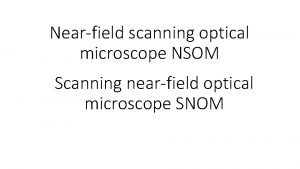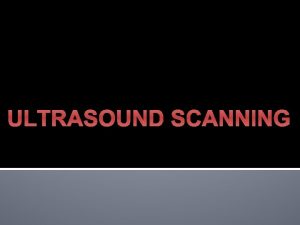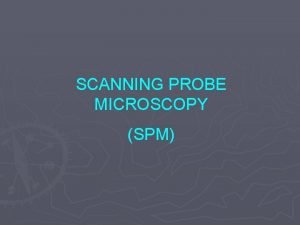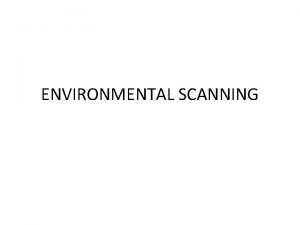Overview of the SARA Model Scanning Analysis Response




















































- Slides: 52

Overview of the SARA Model: Scanning, Analysis, Response, and Assessment

10/7/2020 Characteristics of Traditional Responses • Police are reactive to incidents • Driven by citizen referrals • Driven by public demands for change • Limited information from community • Limited partnerships with community 2

10/7/2020 Traditional Responses, Cont. Leadership is focused on internal operations: • • • Budget Staffing Citizen complaints Politics Policies and procedures 3

10/7/2020 Traditions Responses: Cont. • Officers follow orders - have little encouragement to be innovative in solving problems • Evaluations based on “incidents”: • Arrests • Citations • Patrols 4

10/7/2020 Traditions Responses: Cont • Police largely operate in silos • Police have few external partnerships when it comes to violence • Police view themselves and are viewed as hierarchical 5

10/7/2020 Traditional policing strategies are limited in effectiveness 1. KC Patrol Experiment (1972 -73) • 15 beats (2 x, 1 x 0 x) • Crime data, survey data showed no difference in crime, fear, public perceptions. No displacement. 2. Response Time (Spellman & Brown, 1984). • Premise is increased response time would increase clearance rates, deter crime, and incapacitate criminals • Fast response times only effect 2. 9% of CFS • In most cases the public just wants to know when they will be there. 3. Investigations (Rand Corp, 1975). • Examined investigations in 29 departments • Found most detective work was routine and non-productive • Only about 3% of cases are solved because of special investigative techniques (Fingerprints, etc. ). Most solved because of a witness. 6

10/7/2020 Today’s policing is shaped by two insights into the past • The police are unable to solve crime problems alone and need the community’s assistance to control crime, fear, disorder, and neighborhood decay • Current policing strategies are too reactive and need to be reconstructed in such a way to proactively address problems which generate crime 7

10/7/2020 Rethinking Your Job • Herman Goldstein - a Problem Oriented Approach to Violence. • Responding to incident is only the 1 st step in a strategy • Find permanent solutions to problems that lead to incidents 8

10/7/2020 Goldstein Theorized: • Underlying conditions create problems • Problems in turn lead to incidents • Many incidents are reported to administration • Incidents appear to be isolated 9

10/7/2020 Incidents • They can arise from a single common source • Police officials usually only deal with the most obvious symptom of the problem: • • Drug use Vandalism Homicide Burglaries, robberies, etc. 10

10/7/2020 Problem oriented policing A routine method for: • • Identification of problems Analysis of problems A response to problems An evaluation of effectiveness 11

10/7/2020 The SARA Process • SCANNING • ANALYSIS • RESPONSE • ASSESSMENT 12

10/7/2020 Problem Solving • Problems • A problem is a basic unit. • Problem Solving • The process of devising and implementing a strategy for finding a solution or for transforming a less desirable condition into a more desirable one. 13

10/7/2020 Our Definition of a Problem • Any condition that alarms, harms, threatens, or has potential for disorder in the neighborhood, particularly incidents that may appear as isolated, but— • . . . Share certain characteristics such as common pattern, victim or geographic location. 14

10/7/2020 How incidents are related • Police officers look for common elements that link this particular problem to other problems. 15

10/7/2020 The Crime Triangle Location Victim Perpetrator 16

10/7/2020 Seeking the Underlying Conditions • Police officers often deal with symptoms of a problem • Characteristics of people who live or enter into a neighborhood • How people feel about their neighborhood • The condition of the neighborhood. 17

10/7/2020 Expected Outcomes of Problem Solving: • Eliminate the problem entirely • Reduce the number of occurrences of the problem • To reduce the degree of harm caused by the problem • To improve the way the problem is being dealt with. • Change the environment (CPTED) 18

10/7/2020 SARA Problem Solving Model Scanning Response Analysis Assessment 19

10/7/2020 S A R A 20

10/7/2020 S A R A Scanning Identify crime & disorder problems 21

10/7/2020 S A Scanning Analysis Identify Neighborhood crime & disorder problems Understand conditions that cause problems to occur R A 22

10/7/2020 S A R Scanning Analysis Response Identify Neighborhood crime & disorder problems Understand conditions that cause problems to occur Develop & Implement Solutions A 23

10/7/2020 S A R A Scanning Analysis Response Assessment Identify Neighborhood crime & disorder problems Understand conditions that cause problems to occur Develop & Implement Solutions Determine the Impact 24

10/7/2020 R A S A A A R S 25

10/7/2020 Principles of Problem Solving • Don’t take anything for granted. • Old patterns may hinder solutions. • Trial and error may work as well as logic. • Pay attention to the way the group works. 26

10/7/2020 Principles of Problem Solving • Look at problems from different angles. • Anticipate obstacles to problem solving. • Take the emotion out of problems. • Learn from losing. 27

10/7/2020 Common Errors in Problem Solving • The problem is not clearly defined and or the group does not have enough information to understand the problem. • The problem is stated too narrowly. Real problem will not be resolved. Only a symptom is affected. 28

10/7/2020 Common Errors in Problem Solving • Tentative solutions are chosen too early in the process (before the problem is understood). • The range of information gathered is too narrow. • Some major constraints to solving the problem are ignored. 29

10/7/2020 Common Errors in Problem Solving • Traditional solutions are preferred despite lack of effectiveness. • Priorities among problems are not established. • A plan stating who will do what when, is not developed or is not well thought out. 30

10/7/2020 Common Errors in Problem Solving • Resources needed to carry out a solution are not clearly specified or obtained early enough in the process. • The costs of a solution is not weighed against the potential benefits. 31

10/7/2020 Common Errors in Problem Solving • Feedback and evaluation procedures are not built into the solution, therefore, no mechanism exists to monitor progress and determine effectiveness. 32

10/7/2020 Scanning 33

10/7/2020 Scanning • Identifying recurring problems • Prioritizing the problems • Developing broad goals • Confirming that the problems exist • Determining how often the problem occurs and how long it has been a concern • Selecting problems for closer examination 34

10/7/2020 What is a Problem • Two or more incidents: • • • Similar in nature Causing harm Of concern to your organization Unlikely to diminish on its own Stakeholders expect a response 35

10/7/2020 Similar in Nature by: • Behaviors • Theft, drug sales, homicide • Location • Shopping center near school, street corner • Persons • gang members, older students, homeless • Time • Before/after school, Saturday nights • Events • Football games, holidays 36

10/7/2020 Is There Really a Problem? • Incidents may appear to be similar in nature, causing harm, and of concern to neighborhood, police, and public. • Scanning looks for patterns of incidents to establish them as a problem. 37

10/7/2020 Who Identifies Problems? • Police officers • Supervisors • Commanders • Public • Business • Offenders 38

10/7/2020 Methods of Identifying Problems • Analyzing agency records for patterns and trends involving repeat locations, victims and offenders • Mapping specific crimes by time of day, proximity to locations, and other similar factors • Consulting officers, supervisors, teachers, mid-level managers. 39

10/7/2020 Methods of Identifying Problems • Reviewing offense reports/diary • Surveying the public • Reviewing citizen complaints • Reviewing information from neighborhood associations and nonprofit organizations • Consulting social service/governmental agencies • Following media coverage and editorials 40

10/7/2020 Identifying Stakeholders • Local service/government agencies with jurisdiction or an interest in the problem. • Victims of the problem, and/or groups representing victims • Neighbors and friends of victims or students affected by the problem 41

10/7/2020 Identifying Stakeholders • Agencies or people that have some control over offenders • Commercial establishments adversely impacted by the crime or disorder problem • National organizations or trade associations with an interest in the problem. 42

10/7/2020 Analysis • Identifying and understanding events and conditions that precede and accompany the problem • Identifying relevant data to collect • Researching what is known about the problem type • Taking inventory of how the problem is being addressed any strengths/limitations of the current response 43

10/7/2020 Analysis • Narrowing the scope of the problem • Identifying resources that may be of assistance in developing a deeper understanding of the problem • Developing a working hypothesis about why the problem is occurring; is it really occurring? 44

10/7/2020 Reasons Why Analysis is Sometimes Overlooked/Skipped • The nature of the problem sometimes falsely appears obvious at first glance. • There may be some tremendous internal and external pressure to solve the problem immediately. • The pressure of responding to calls does not seem to allow for time for detailed inquiries into the nature of the problem. 45

10/7/2020 Reasons Why Analysis is Sometimes Overlooked/Skipped • Investigating/researching the problem does not seem like “real” police work. • Supervisors may not value analytical work that takes time but does not produce arrests, citations or other traditional measures of police work. • In many communities a strong commitment to the old ways of handling problems prevents looking at the problem in different ways. 46

10/7/2020 Resources for Analyzing Problems Depends on the problem, but here are some general examples of resources: • • • Crime analysts Resident/business surveys Crime environment surveys Interviews with victims and offenders Systems for tracking repeat victimization 47

10/7/2020 Response • Brainstorming for new interventions • Searching for what neighborhoods with similar problems have done • Choosing among the alternative interventions • Outlining a response plan and identifying responsible parties • Stating the specific objectives for the response plan • Carrying out the planned activities 48

10/7/2020 Response Reminders • The responses should be directly linked to the results of your analyses • Try not to limit responses to the police. Other agencies may need to be involved and take some responsibility • Responses should be manageable given the resources, available time, and urgency in solving the problem • A variety of potential responses may be more effective than a single response in some situations. 49

10/7/2020 Assessment • Collecting pre- and post-response qualitative and quantitative data • Process Evaluation • Determining whether the plan was implemented • Determining whether broad goals and objectives were attained • Identifying any new strategies needed to augment the original plan • Better handling of incidents and improved response to the problem • Conducting ongoing assessment to ensure continued effectiveness 50

10/7/2020 Positive Impacts on Problems • • • Total elimination of the problem Fewer incidents Less serious or harmful incidents Better handling of the incidents/improved response to the problem Removing the problem from police consideration. (See Shifting and Sharing Guide) • Diffusion of benefits 51

Thank You
 Sara model
Sara model Identification of scanning and analysis tools
Identification of scanning and analysis tools Environmental scanning and industry analysis
Environmental scanning and industry analysis Internal scanning: organizational analysis
Internal scanning: organizational analysis Environmental scanning and industry analysis
Environmental scanning and industry analysis Internal scanning organizational analysis
Internal scanning organizational analysis Environmental scanning and industry analysis
Environmental scanning and industry analysis Environmental scanning and industry analysis
Environmental scanning and industry analysis Scanning functional resources
Scanning functional resources Natural and forced response
Natural and forced response What is natural response
What is natural response Primary immune response and secondary immune response
Primary immune response and secondary immune response Model mixed scanning dalam pengambilan keputusan
Model mixed scanning dalam pengambilan keputusan Gedig vir my ma
Gedig vir my ma Sara problem solving model
Sara problem solving model Chapter 1 overview of financial statement analysis
Chapter 1 overview of financial statement analysis Hát kết hợp bộ gõ cơ thể
Hát kết hợp bộ gõ cơ thể Lp html
Lp html Bổ thể
Bổ thể Tỉ lệ cơ thể trẻ em
Tỉ lệ cơ thể trẻ em Voi kéo gỗ như thế nào
Voi kéo gỗ như thế nào Chụp phim tư thế worms-breton
Chụp phim tư thế worms-breton Hát lên người ơi
Hát lên người ơi Môn thể thao bắt đầu bằng từ đua
Môn thể thao bắt đầu bằng từ đua Thế nào là hệ số cao nhất
Thế nào là hệ số cao nhất Các châu lục và đại dương trên thế giới
Các châu lục và đại dương trên thế giới Công thức tiính động năng
Công thức tiính động năng Trời xanh đây là của chúng ta thể thơ
Trời xanh đây là của chúng ta thể thơ Mật thư anh em như thể tay chân
Mật thư anh em như thể tay chân Làm thế nào để 102-1=99
Làm thế nào để 102-1=99 Phản ứng thế ankan
Phản ứng thế ankan Các châu lục và đại dương trên thế giới
Các châu lục và đại dương trên thế giới Thể thơ truyền thống
Thể thơ truyền thống Quá trình desamine hóa có thể tạo ra
Quá trình desamine hóa có thể tạo ra Một số thể thơ truyền thống
Một số thể thơ truyền thống Cái miệng bé xinh thế chỉ nói điều hay thôi
Cái miệng bé xinh thế chỉ nói điều hay thôi Vẽ hình chiếu vuông góc của vật thể sau
Vẽ hình chiếu vuông góc của vật thể sau Biện pháp chống mỏi cơ
Biện pháp chống mỏi cơ đặc điểm cơ thể của người tối cổ
đặc điểm cơ thể của người tối cổ V cc cc
V cc cc Vẽ hình chiếu đứng bằng cạnh của vật thể
Vẽ hình chiếu đứng bằng cạnh của vật thể Vẽ hình chiếu vuông góc của vật thể sau
Vẽ hình chiếu vuông góc của vật thể sau Thẻ vin
Thẻ vin đại từ thay thế
đại từ thay thế điện thế nghỉ
điện thế nghỉ Tư thế ngồi viết
Tư thế ngồi viết Diễn thế sinh thái là
Diễn thế sinh thái là Dot
Dot Số nguyên tố là
Số nguyên tố là Tư thế ngồi viết
Tư thế ngồi viết Lời thề hippocrates
Lời thề hippocrates Thiếu nhi thế giới liên hoan
Thiếu nhi thế giới liên hoan ưu thế lai là gì
ưu thế lai là gì
